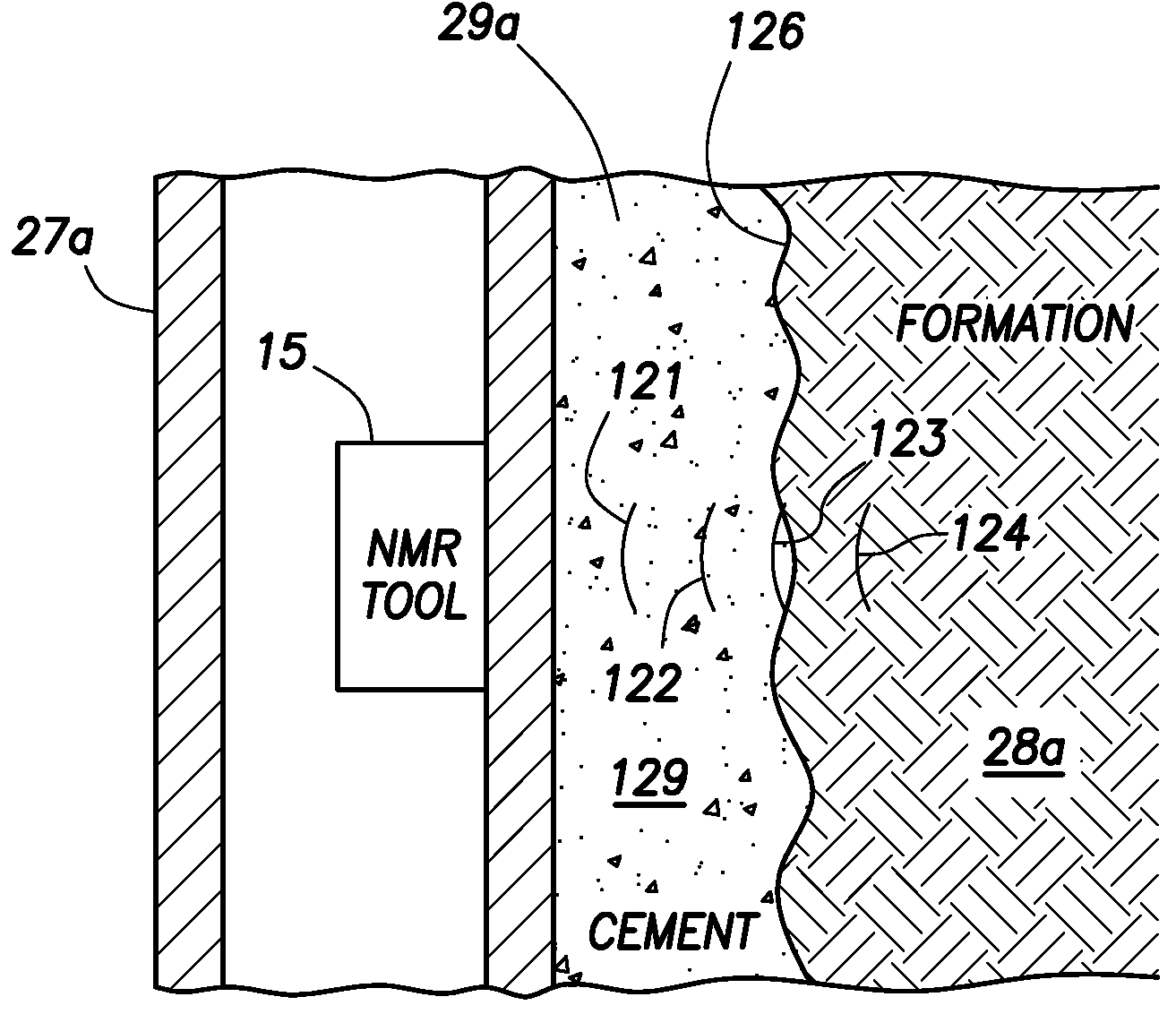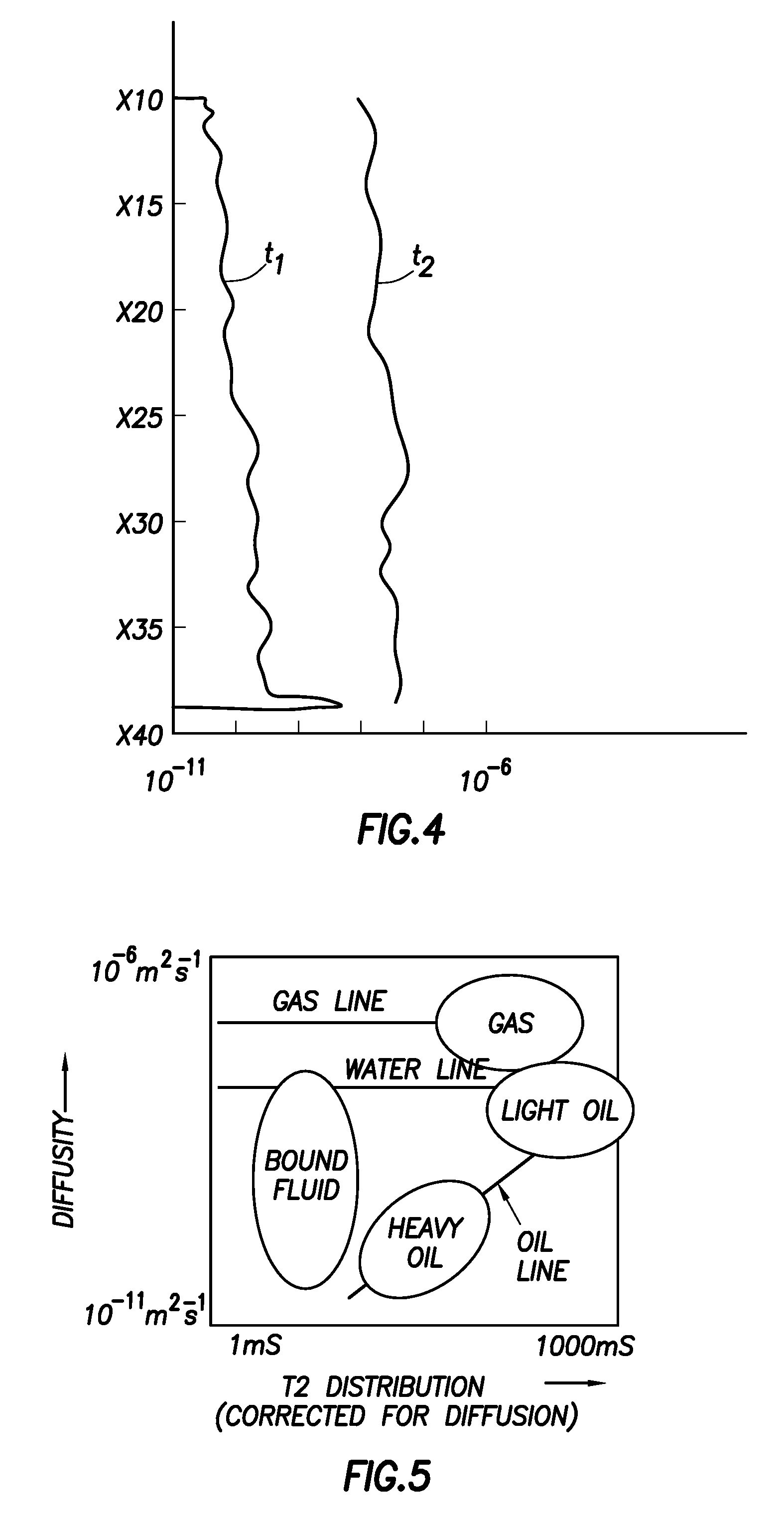Time-lapsed diffusivity logging for monitoring enhanced oil recovery
a technology of enhanced oil recovery and diffusivity logging, which is applied in the field of time-lapsed diffusivity logging for monitoring enhanced oil recovery, can solve the problems of ineffective current reservoir monitoring techniques that measure the changes in water saturation to calculate the displacement of oil, ineffective induction tools that measure conductivity or pulsed neutron tools that measure carbon/oxygen ratio, and ineffective thermal neutron-emitting tools that measure conductivity
- Summary
- Abstract
- Description
- Claims
- Application Information
AI Technical Summary
Benefits of technology
Problems solved by technology
Method used
Image
Examples
Embodiment Construction
[0027]The use of nuclear magnetic resonance (NMR) imaging behind eccentered, non-conventional casing for measuring diffusivity and changes in various fluid saturations is disclosed. The casing should be non-conductive and non-magnetic and therefore preferably non-metallic. NMR tools are normally designed to run in open holes and not cased holes because the conventional steel casing used in a cased hole is conductive and strongly attenuates the pulsed radio frequency used in NMR measurements. Currently the non-conventional casings made of fiberglass and / or reinforced epoxy or other resins are used in wells where there is an issue of corrosion from CO2, H2S and formation brine. The combined use of NMR and a decentralized, non-magnetic and non-conductive casing will allow investigation beyond the annulus.
[0028]Nuclear magnetic resonance (NMR) tools measure both diffusivity and HI. Therefore, for the reasons set forth above, in certain circumstances and particularly when evaluating a re...
PUM
 Login to View More
Login to View More Abstract
Description
Claims
Application Information
 Login to View More
Login to View More - R&D
- Intellectual Property
- Life Sciences
- Materials
- Tech Scout
- Unparalleled Data Quality
- Higher Quality Content
- 60% Fewer Hallucinations
Browse by: Latest US Patents, China's latest patents, Technical Efficacy Thesaurus, Application Domain, Technology Topic, Popular Technical Reports.
© 2025 PatSnap. All rights reserved.Legal|Privacy policy|Modern Slavery Act Transparency Statement|Sitemap|About US| Contact US: help@patsnap.com



